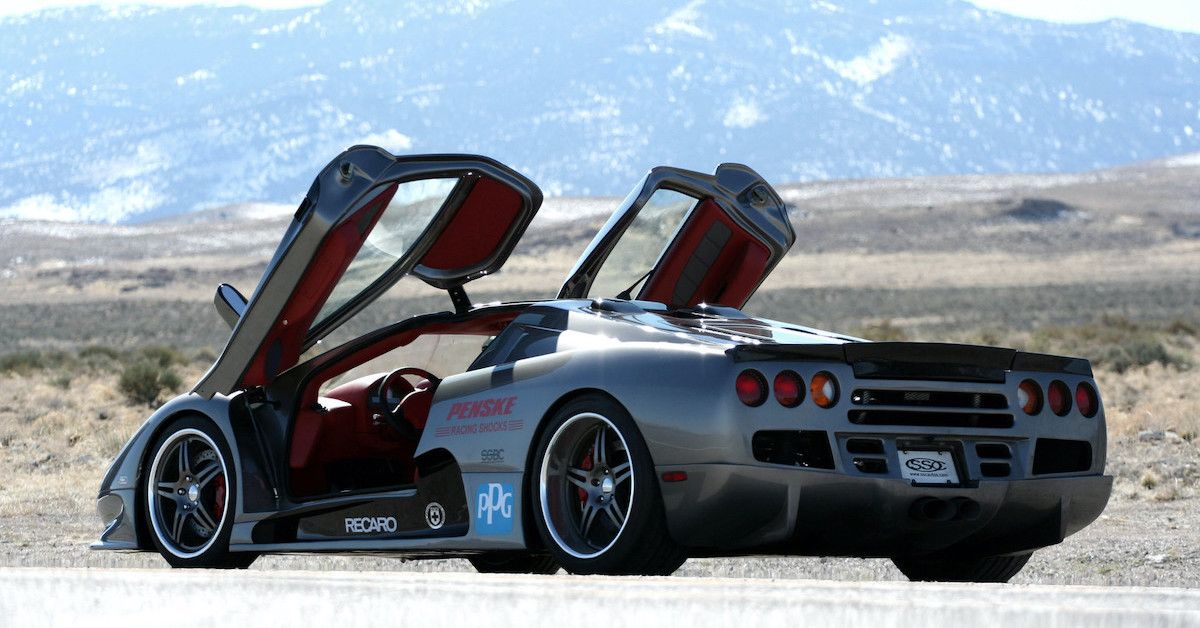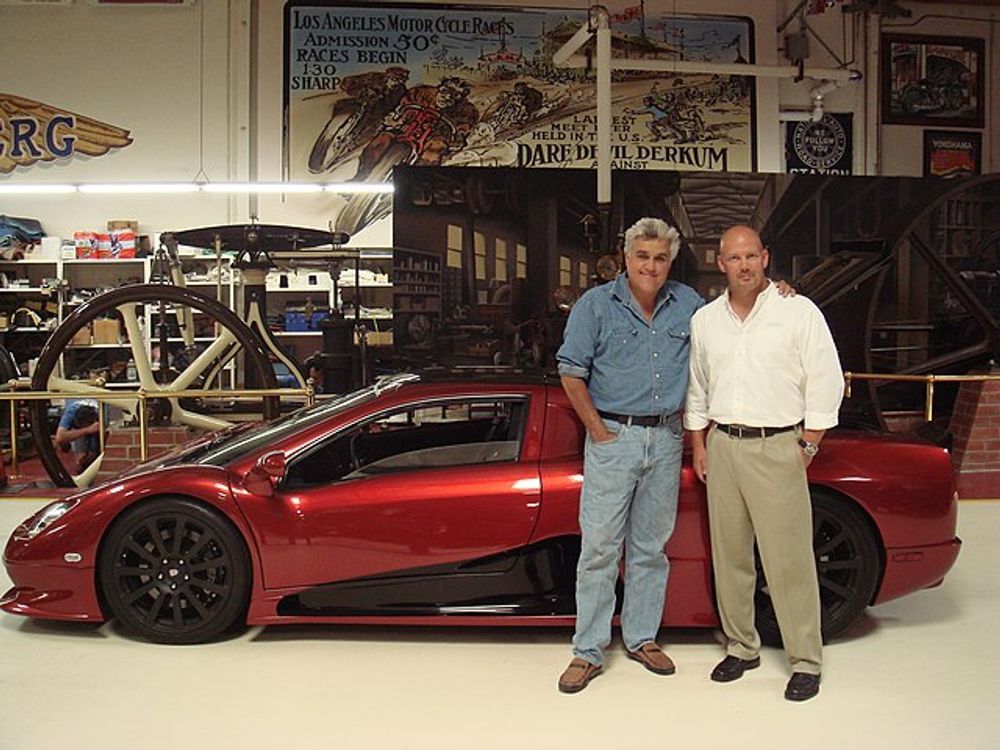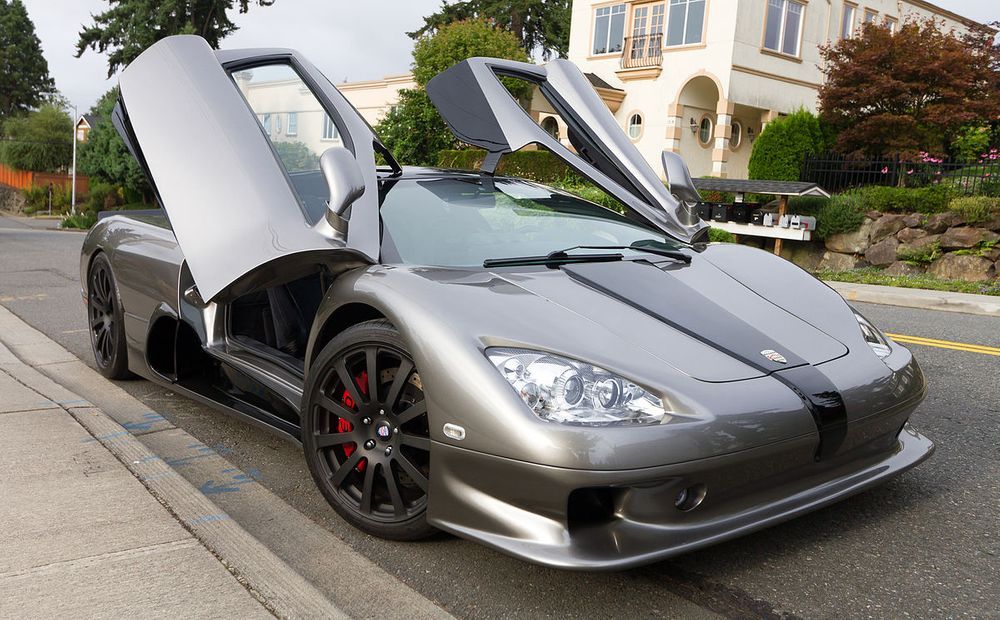SSC North America has been in the business of making a name for themselves by building production supercars and sports cars since 1998. The Washington based company that started as Shelby SuperCars Inc went through a lot of growing pains on their way to success, but after several lawsuits and lost records, they have reached their goal of making a name for themselves as a leading supercar and sports car manufacturer in North America.
Founder and owner, Jerod Shelby, was determined to reach his goals and make a name for his company. So determined, in fact, that he changed the name of the business to SSC North America so that it would not be attached to the existing iconic Shelby Mustang or its creator, Carroll Shelby.
The Ultimate Aero was the first major step towards reaching that goal. As the first production car released by SSC North America, the company had high hopes for the vehicle. The Ultimate Aero delivered on those hopes and more.
Let’s take a closer look at why the SSC North America's Ultimate Aero is a speed icon!
History Of The Ultimate Aero
The mid-engine SSC Ultimate Aero has a rich history. One was even featured on Jay Leno's Garage when the TV personality hung out with CEO of SSC, Jerod Shelby. The prototype was introduced in 2004 and was the first car introduced by the company. The supercar took years of development, engineering, and design to bring to market. In 2006, the Ultimate Aero was tested on the slalom course by Road & Track Magazine.
According to Road & Track’s testing, the Ultimate Aero reached record-breaking speeds. It beat out the previous track record, which was held by Enrico Ferrari. Later, this record was proven again by Guinness World Records, as on September 13, 2007, the Ultimate Aero entered the record books with speeds up to 256.14 MPH as the fastest production car, a designation previously held by the Bugatti Veyron.
This began a competitive streak between Bugatti and SSC North America that led to both brands competing to continue to innovate and update their cars to try to best one another and create faster designs. Bugatti took the record back from SSC in 2010 with their newest iteration of the Bugatti Veyron 16.4 Super Sport, which reached speeds up to 268.856 MPH. In 2017, the record went to the Koenigsegg Agera RS at 277.87 MPH.
Through these record-changes, SSC continued to very publicly work towards a faster model to reclaim their title. They continue to do so, as their most recent top speed (achieved by the SSC Tuatara in 2020) was disputed as a non-production car speed and was disqualified for not being “technically” street legal.
Adding to the question of street legality and what constituted a “production car” for the purposes of recording speeds. SSC was questioned as their footage of the supposed 331 MPH record-breaking run was incorrect, which the company later admitted was the fault of the equipment used to clock the speed and was unintentional. As such, to date, the Ultimate Aero continues to hold the only record-breaking speed met and officially validated by any car from SSC North America.
Specs And Features Of The Ultimate Aero
The first iteration (prototype 1) of the SSC Aero from 2004 included a massively powerful supercharged 6,187 cc/377.6 cubic inch LS1-based V8 engine. It was capable of incredible amounts of power, including up to 811 horsepower at 6600 rpm and torque of 771 pound-feet at 5800 rpm. The car was relatively light at just 2,712 pounds, making it capable of speeds up to 249 MPH. The sleek design created downward pressures to ensure the car stayed adhered to the road, even when reaching top speeds, despite its lighter weight.
Later, SSC revamped the original Aero to a second-generation model (known as number 2). Introduced in 2005, this version underwent a wind tunnel testing that theorized that the car was capable of speeds up to 275 MPH if the transmission was adjusted. With the current transmission, the car was capable of a top speed around 234 MPH.
The engine on the number 2 was a supercharged Chevrolet Corvette C5-R V8 capable of up to 791 horsepower at 6600 rpm and torque of 737 pound-feet at 5800 rpm. This iteration’s dry weight exceeded the prior model (due to the heavier engine and some modifications to the body design), coming in at just over 2866 pounds. Using carbon fiber upgrades and titanium parts, the final production version of the Ultimate Aero was brought to market in 2006. Although it kept the engine of the prior generation, the production standard found increased engine displacement and a boost to overall performance.
From 2007-2008, SSC introduced a new trim-the Ultimate Aero TT, which boasted a twin-turbocharged engine and an adjusted six speed transmission that was capable of speeds up to 273 MPH at 7200 rpm. Additionally, this new model had other upgrades including a navigation system, audio system, rear camera, air conditioning, and trunk space.
Always seeking more power and speed, SSC upgraded again in 2009, adding a power increase of 15% on the TT, making speeds up to 267 MPH possible with higher engine airflow and carbon fiber louvers. Also in 2009, SSC introduced plans to produce an electric version of the Ultimate Aero (the EV) which features twin electric motors and was able to reach a top speed of 208 MPH. Unfortunately, this version never made it to actual production.
The most recent and final iteration of the Ultimate Aero, the XT was revealed in 2013. The special version marked the end of the production of the Ultimate Aero as the company shifted their focus to other models. Fitted with a new 6.9-liter twin turbocharged V8 and seven-speed gearbox, the XT was capable of speeds up to 268 MPH. It was a worthy end to the legacy of speed that is the Ultimate Aero.



